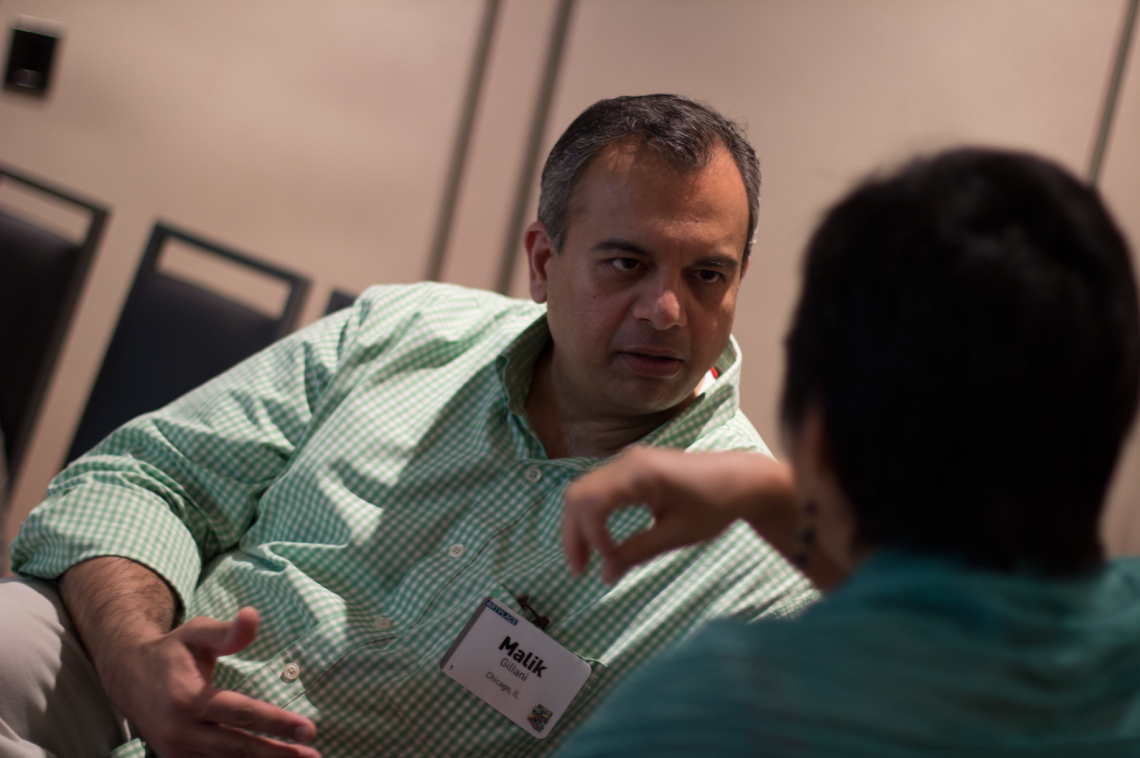
ArtPlace often refers to the “Four Questions” that each creative placemaking project should ask:
- What is the geographic community?
- What is the desired community change?
- How will the arts help achieve that change?
- How will you know that change is happening?
These are four great questions to ask at the onset of a new undertaking, and they also align with the overall lifecycle of a project (e.g. initial research, strategy formation, implementation, and reflection).
These are difficult questions that deserve some deep thought, so during the second day of the ArtPlace Summit in Phoenix, AZ, we asked attendees to focus their collective brainpower on parsing pieces of the puzzle via breakout sessions. Each breakout session was broken into two subtopics, which became the focus of two separate breakouts.
Today we’re going to take a look at the major takeaways from the two breakout sessions addressing this first question: What is the geographic community?
In the first of the two sessions, “Understanding Place: Tools for Investigating Who and What Comprises Community”, Seth Beattie of Spire + Base in Cleveland, OH explained that the goal of the subtopic was to “understand what underpins a community [and] what is of importance to the people who reside there.”
Jenifer Kaminsky, director of planning and community development for PUSH Buffalo in Buffalo, NY, started off the discussion with a presentation of her organization’s work with School 77, a vacant school they are developing into multi-use spaces for nonprofits and housing for senior citizens. The process of discovering what the building would eventually become, however, was a project in its own right.
“We didn’t start with the goals,” Jennifer said. “We started with the site and the overarching goal of bringing it back for community use. Our organizers went to meetings and went door to door…asking over 500 households in the neighborhood what they wanted to see [in the space].”
Engagement can be complicated, though. “There’s everyday people who have no idea what creative placemaking is,” Seth pointed out. “Let alone all these facets of information that we’re trying to delve into at a 201 level. How do we make this type of material accessible to people?”
In order to more completely understand a place, we have to build trust and partnerships with the community. Jennifer’s strategies for overcoming barriers included removing exclusionary language and jargon from the dialogue and replacing it with visual language. (“We had a big summer concert in the main park in the neighborhood. We had people drawing on maps, putting stickers on things and engaging in different ways,” she explained.)
Tapping into local leaders and community activists who speak the language of the neighborhood is also essential. The breakout attendees agreed that these people can be integral to the asset mapping process, and can often be incredibly helpful in engaging the community in a back-and-forth dialogue, ensuring local perspective is considered at every turn.
Activating a space before the planning process begins is another hugely important facet of understanding it. Remy De La Peza, director of planning and policy counsel at the Little Tokyo Service Center in Los Angeles, CA, asked the group how her organization might use a parking lot to help locals cultivate a sense of ownership over the area before any development begins. Suggestions like using the lot for a charrette and introducing a piece of public art were offered.
The discussions carried over seamlessly to the second breakout session. In the “Getting Beyond Demographics: Strategies for Furthering Community Reach” breakout, Amanda Lovelee, the city artist for Public Art Saint Paul in St. Paul, MN, presented her Urban Flower Field project as a means of getting the public to care about a blighted area before it’s developed.
Lovelee and her team transformed a vacant lot in downtown St. Paul into an award-winning park which merges an environmental science experiment with a piece of public art. “My hope was to get the community to start to care about the space,” she explained. “So that when it came time to start the planning process, people would actually come to the table and want to participate in the planning.”
Lovelee also created Pop Up Meeting, a new type of civic engagement that comes in the form of a popsicle truck. Lovelee drives the truck around St. Paul, handing out popsicles and surveys, bringing the engagement process to the streets. She found that over 70% of the people surveyed had never attended a city meeting before.
“There’s this idea that people don’t want to participate,” Maanav Thakore, senior associate at the Interaction Institute for Social Change in Boston, MA, said. “Actually, no. People have been forced out of participating…We know that there’s no way in planning that we’re going to get around the need to meet, however, we can shift, disrupt the way that meetings happen. We can shift and disrupt where engagement happens, and we can strive to more deeply engage the margins.”
The session attendees agreed that engaging marginalized people and working beyond demographics often requires bringing the meeting to them, instead of always asking them to come to us. One attendee pointed out that one of the biggest barriers those in the creative placemaking field might face is insincerity. “There’s this sense of, ‘We’re the professionals. We come with our suits and our ties and you’re the people for whom we’re going to offer this.’ You can’t do that. You’ve got to really meet people where they are and listen,” she said.
Across both sessions, that’s really what it boiled down to. How do you find out what the geographic community for a project is? How do you understand place and reach a perspective that goes beyond demographics? Get out there and listen.





